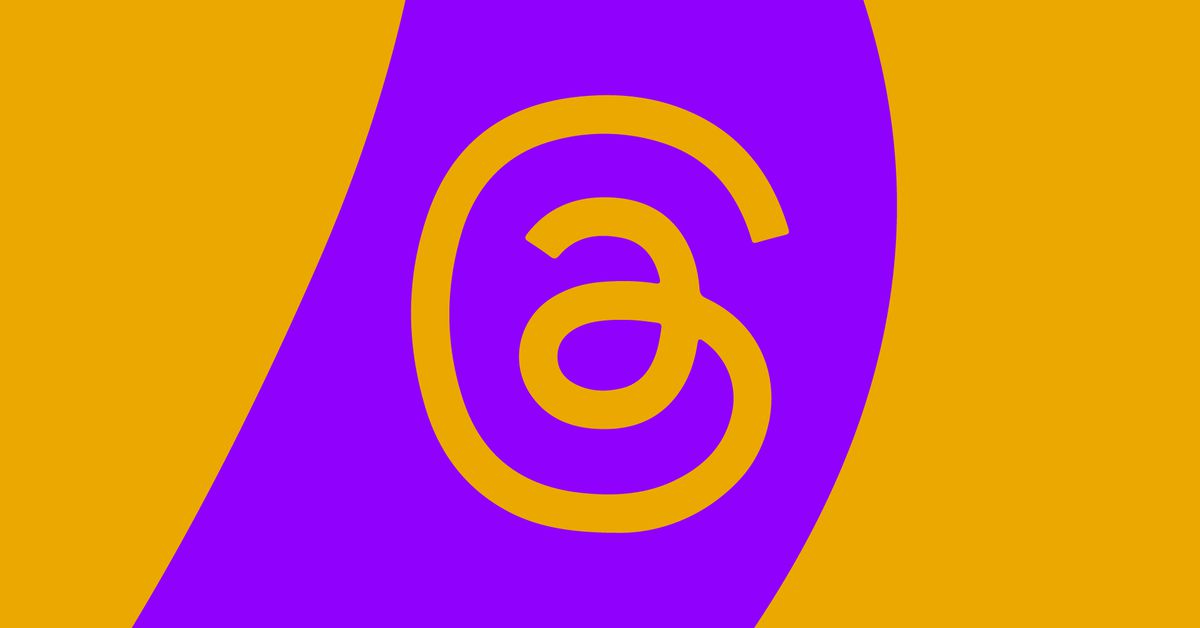Threads, Meta’s X competitor, is officially a year old. Though it was launched in haste with a bare-bones set of features, Meta has steadily improved the app to make it a decent place for people who want to post on a platform that isn’t X.
The site arrived at just the right time. Last summer, Elon Musk’s takeover of X—then called Twitter—had not only led to the willful firing of large parts of the company and the shutdown of servers, but also to changes that had real consequences for the site’s user experience. The site was highly unstable, and major advertisers had fled, leaving cheap, worthless products and crypto ads in their wake. Chaotic changes to authentication led first to high-profile celebrity impersonations and bans, and then to the spread of false information.
Threads promised a social platform without the baggage — even if the app was pretty bare-bones when it launched on July 5, 2023. Users could publish 500-word text posts. They could embed images or videos into their posts, and comment on them, like them, repost them, or share others’. That was pretty much it. Crucially, Threads accounts are linked to Instagram accounts, so it was relatively easy to get started using the platform.
That was enough to get 100 million users to test the waters in the first five days, breaking OpenAI’s two-month run to the same record with ChatGPT. But big features like hashtags and trending topics weren’t yet part of the experience. The only feed available was an algorithmic one — without the option to only see posts from people you follow — and that was also full of shrinking posts from celebrities and brands.
Meta has worked quickly to address the biggest needs. A followers-only feed was rolled out before the app was a month old. The true web app launched in August. There are now hashtags (sort of) and trending topics. The company has even added features it reportedly didn’t have to, like a TweetDeck-like web experience, complete with auto-refreshing feeds and the option for ever-present columns filled with followers-only feeds, likes, and saved posts.
There are still a few things missing, like a dedicated Threads inbox for DMs — Meta still hasn’t embraced that, though it is experimenting. But overall, things have changed for the better over the past year.
Another potential differentiator for Threads was a promised fediverse integration — and to the surprise of many, Meta appears to be delivering on this. Threads’ protocol is ActivityPub, the decentralized protocol used by Mastodon. The fediverse integration is in an optional beta now, and enabling it will allow non-Threads fediverse users to follow you, see and like your posts, and have their comments even appear in Threads. Still, Instagram CEO Adam Mosseri has said that the feature means creators on the platform aren’t necessarily locked into Threads, which could be reassuring for those who want a little more control over their social media identity.
A combination of these things makes Threads seem like the heir to Twitter’s former crown. But Threads isn’t guaranteed to replace X.
Not everyone finds the platform’s focus on positivity appealing
Mosseri and Co. have tried to foster a generally measured atmosphere on the platform, threading the needle of engagement without relying on outrage. Not everyone finds the platform’s focus on positivity appealing, including Meta’s choice to keep news and political content at bay and give users options to limit political posts on their feeds. But there may not be much it can do to stop people from flooding the platform with more political content as the U.S. presidential election approaches in November. That will be a big test of its approach.
Whether the approach helps or hinders the platform, it’s still growing, despite a dip in activity after its launch. Threads expanded to Europe in July, and four months later Mark Zuckerberg told investors it had about 150 million monthly active users. This month, analytics firm Similarweb found that while Twitter still has a higher daily monthly active user count, it’s trending downward and Threads is trending higher. And as of Wednesday, Threads had more than 175 million users.
Still, ecosystems are fragmented, and Threads isn’t guaranteed to replace X. There are other competitors, too. As of this writing, about 5.9 million people use or have accounts on Bluesky, which is decentralized but not on the ActivityPub platform that Threads is betting on. That user base may be a drop in the ocean compared to Threads’ user base, but Bluesky is growing, and Threads doesn’t feel like it’s as well-suited to the kind of chaotic content Bluesky users produce. Bluesky also has features that Threads hasn’t rolled out, like proper DMs and more customizable moderation tools.
And Meta still has a long way to go to win over many established X users. Anyone who has spent years building their follower base or following on the platform may not have much reason to leave, especially if the people they care about aren’t moving away from X. Many communities on X, such as the so-called “sports Twitter”, haven’t quite made the transition to Threads yet, despite overtures like live scores.
Still, after just a year, Threads is still going strong. It lacks much of what made Twitter so appealing, but Musk has thrown a heavy bag of wrenches into X’s machinery since he bought it. Maybe Threads just needs to be good enough — and be around when that machinery finally breaks down.
